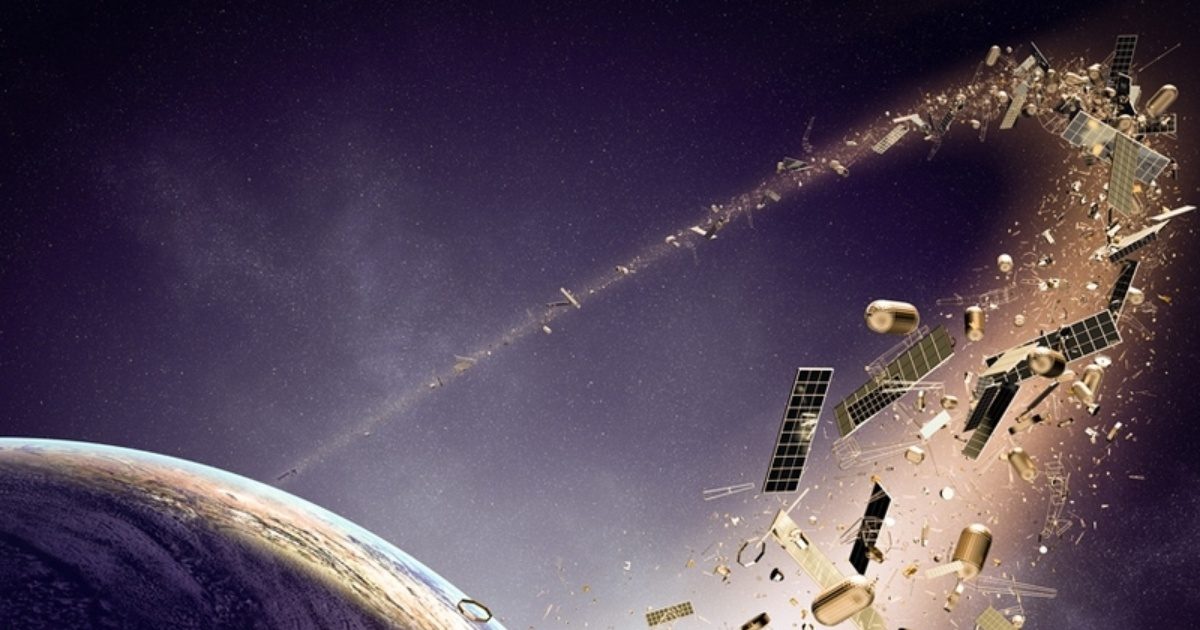Garbage is slowly increasing in space, will it harm the earth? A scientist’s warning
Melbourne. News this week revealed a possible collision between an Australian satellite and a suspected Chinese military satellite. Meanwhile, earlier this The US government has fined DishNet Networks, a publicly traded company that provides satellite TV services, US$150,000 for storing space junk. This fine was not related to a recent wreck, but was levied on a communications satellite that had been in space for over 21 years. The Federal Communications Commission is expected to see a 700% increase in active satellites in space by the end of the decade. As space junk becomes more prevalent, researchers have developed a new field for space domain awareness, focusing on ground-based tracking and monitoring of objects in Earth orbit. Australia's location on Earth offers a unique opportunity to contribute to space domain Awareness. The team is currently working on objects in geosynchronous orbit and geostationary orbit.

Diterbitkan : 2 tahun lalu oleh Sakina Kaukawala di dalam Science
Melbourne. News this week revealed a possible collision between an Australian satellite and a suspected Chinese military satellite. Meanwhile, earlier this month, the US government imposed a first-ever penalty for storing space junk. The Federal Communications Commission has fined DishNet Networks, a publicly traded company that provides satellite TV services, US$150,000. It came as a surprise to many in the space industry, as the fine was not related to a recent wreck — it was levied on a communications satellite that had been in space for more than 21 years. It was Ecostar-7, which failed to meet the orbital requirements outlined in the previously agreed debris mitigation plan.
The EchoStar-7 fine may be America’s first such case, but it likely won’t be the last. We are entering an unprecedented era of space utilization and can expect a 700% increase in the number of active satellites in space by the end of this decade. As our local space becomes more crowded, tracking thousands of satellites and pieces of space junk will become more important. So researchers have a new field for this: space domain awareness.
Three types of classes, plus junk
Humans have been launching satellites into space since 1957 and have gotten pretty good at it over the past 66 years. There are currently over 8,700 active satellites in various orbits around Earth. Satellites typically exist in three main orbits, and understanding these is key to understanding the complex nature of space debris. The most common orbit for satellites is low Earth orbit, with at least 5,900 active satellites. Objects in low Earth orbit are 1,000 km above the Earth’s surface and are constantly moving. The International Space Station is an example of a low Earth orbit object, traveling around Earth 16 times per day.
Above this is medium Earth orbit, where satellites are 10,000 to 20,000 km above Earth. It’s not a particularly busy place, but it’s home to some of the most important satellites ever launched – they provide our Global Positioning System, or GPS. Finally, we have very high altitude satellites in geosynchronous orbit. In this orbit, the satellites are 35,000 km above the Earth in an orbit that matches the Earth’s rotation rate. A special type of this orbit is the geostationary Earth orbit. It lies in the same plane as the Earth’s equator, making satellites appear stationary from the ground.
As you might say, Earth’s atmosphere is buzzing with satellite activity. It gets even messier when we consider space junk, which is defined as unused artificial debris in orbit around Earth.
Space junk can range from entire satellites to millimeter-wide fragments of abandoned spacecraft and launch vehicles that are no longer in use or functioning. Recent estimates suggest that there are more than 130 million site debris, of which only 35,000 pieces are large enough (over 10 cm) to be routinely tracked from the ground.
How do we track them all?
This is where space domain awareness comes in. It is the field of detection, tracking and monitoring of objects in Earth orbit, including active satellites and space debris. We do most of this through ground-based tracking, either through radar or optical systems like telescopes. While radar can easily track objects in low earth orbit, in high orbit we need optical sensors. Objects in medium Earth orbit and geostationary orbit can be tracked using sunlight returning to Earth. For reliable and continuous space domain awareness, we need multiple sensors contributing around the world. From these you can see what high-altitude satellites from Earth might look like, appearing stationary while they move.
Australia’s role in space awareness
Because of our location on Earth, Australia has a unique opportunity to contribute to space domain awareness. The US already has several facilities off the west coast of Australia as part of a space surveillance network. This is because on the West Coast, telescopes can operate in dark night skies with minimal light pollution from large cities. Also, we are currently working on a space domain awareness technology demonstrator (proof of concept) funded by the Smartsat CRC. It is a government-funded consortium of universities and other research organizations with industry partners such as IT firm CGI.
We are combining our expertise in observational astrophysics, advanced data visualization, artificial intelligence and space weather. Our goal is to create technology that can understand what’s happening in space minute by minute. Then, we can line up follow-up observations and observe objects in orbit. Our team is currently working on objects in geosynchronous orbit with active and passive satellites. EchoStar-7 is just one example of the fate of a retired spacecraft – the FCC is sending a stern warning to all other companies to complete their debris mitigation plans. Inert objects in orbit can threaten to collide with each other, causing a rapid increase in space debris. If we want to use Earth’s space domain as long as possible, we must keep it safe for all.
